Group
I have been tremendously lucky over the years to get to work with fantastically bright students and postdocs. Here I just collect a little bit of information about many of them and some of the work we did together.
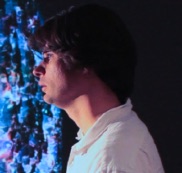
Ralf Kaehler is a computer scientist with a PhD (2005) in applied math. We have collaborated since 2002 or so and he has joined us at KIPAC in 2007. Since then we have contributed visualizations to planetarium shows, magazines and many TV and internet programs. He is the wizard behind the KIPAC visualization lab in which we use immersive visualization to make the most of our data. We are writing a number of papers mainly in visualization conferences but also for the astrophysical literature in how to best use graphics processing units to enable science and communicate our results to a wide range of audiences.

Phil Mansfield got his PhD at the University of Chicago working with Andrey Kravtsov before joining as at KIPAC as a postdoc. He is an expert in N-body simulations of structure formation, assembly bias, and many topics associated with the physics and properties of dark matter halos. We are currently working sophisticated analysis of dark matter simulations and data compression techniques.

Sihan (Sandy) Yuan got his PhD at Harvard working Daniel Eisenstein on special three point functions, assembly bias, halo occupation distribution modeling and other cool topics related to large scale structure physics and the analysis of galaxy surveys. We are currently exploring topics with our novel nearest neighbor cumulative distribution function statistics and real world nuisance issues in actual galaxy surveys.

Alvaro (Al) Zamora has been a graduate student in my group. We have worked on higher order hydrodynamics using the BGK approach to write a massively parallel hydro code, ultra-high resolution cosmological simulations, scalar field dark matter, and most recently on some new large scale structure statistics.

Andrew Eberhardt started in the Fall of 2017 to work with us. He currently is focusing on understanding the connections between the classical Vlasov-Poisson system and the quantum mechanical analogs in the Schrödinger-Poisson system of equations. His research is of relevance in standard cosmological structure formation, plasma physics and potentially the dynamics of fuzzy dark matter models. We recently published some papers on aspects of mean field theories in the context of bosonic quantum many body systems.
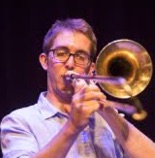
Devon Powell was a graduate student in my group. We are working on novel algorithms for exact voxelization and rasterization. These are computational geometry building blocks which have many applications in numerical algorithms to solve physical systems. We are testing this so far mostly on new Dark Matter fluid codes as well as new methods for radiation transport and novel analysis techniques for cosmological simulations.

Sam Totorica was a graduate student in my group. We are working on novel algorithms for plasma physics calculations. We look at both the Vlasov-Poisson system and the Vlasov-Maxwell system of equations. We are also using the state-of-the-art plasma code Osiris to study reconnection and are particularly interested in astrophysical applications but also the ongoing experiments in the Matter under extreme conditions (MEC) experimental hutch at the Linear Coherent Light Source here at SLAC.
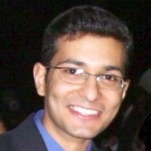
Arka Banerjee studies the cosmological large scale structure and in particular how to constrain the mass of neutrinos and their hierarchy, from existing and future galaxy surveys. He also intends to investigate different models of the dark sector and place constraints on some of the associated model parameters. His studies make use of large scale cosmological simulations and he has experience with Gadget, Nyx and ART. Arka completed his PhD at the University of Illinois at Urbana Champaign and joined us as a KIPAC fellow. He later moved to Fermilab as a Schramm fellow. We continue to collaborate on the new summary statistics to analyse Large Scale Structure data.
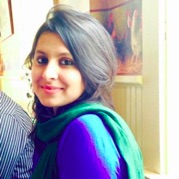
Susmita Adhikari completed her PhD at the University of Illinois in Urbana Champaign. She helped to understand the behavior of a newly detected feature in the outer density profile of dark matter halos known as the splash-back radius. She has shown that this feature can be used as a probe for dynamical friction and found the first direct evidence for dynamical friction in galaxy clusters using SDSS data. She is was a KIPAC fellow and is now a postdoc at the University of Chicago. We are collaborating on analytic models describing the evolution of the two point function of the cosmological density field.
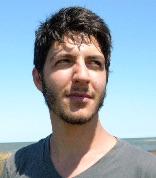
Jonathan Zrake arrived from NYU where he finished his PhD with Andrew MacFadyen with some stunning relativistic MHD simulations using a parallel code he wrote. He has broad interests in high energy astrophysics. We have been working on dynamos with magnetic field injection on small scales and about studying turbulence at unprecedented range of scales. He then worked at Columbia University in New York and is now a professor at Clemson university.

Will East a former Stanford undergraduate returned as postdoctoral fellow to KIPAC after having completed his PhD at Princeton under the supervision of Frans Pretorius. William is an expert in general relativistic hydrodynamics using adaptive mesh refinement simulations. His interests include compact object merger calculations. We investigated numerical approaches to re-heating after inflation together, how new universes are made in inflation as well as how numerical GR codes can be used for cosmology. He then became a Directors Fellow at Perimeter Institute in Canada before joining their faculty.
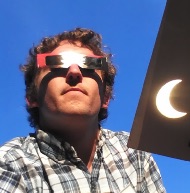
Sam Skillman joined as a Kavli Fellow coming from Boulder, Colorado where he finished his PhD with Jack Burns. He held a DOE computational graduate student fellowship there and is an expert in conducting cosmological adaptive mesh refinement simulations - in particular with applications to clusters of galaxies and studying particle acceleration. He is also an expert in scientific visualization and one of the major contributors to the visualization package yt originally started by our own Matthew Turk quite a few years ago. Sam now works for Decartes Lab as a computational scientist.

Niki Kilbertus was a visiting graduate student from Germany in my group. We are investigating early Universe physics using three-dimensional simulations and calculation gravitational wave emission from dynamics before reheating. He pursued his doctoral studies in computational science and now is at HelmholtzAI doing research in AI and machine learning.
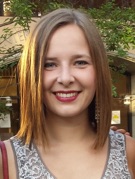
Iryna Butsky was a visiting student with us from Fall 2014-2015 working on cosmic magneto-genesis. Specifically she implemented a novel scheme to include magnetization from supernovae when they provide thermal and kinetic feedback in simulations of Galaxy Formation. She showed that the dynamo is so fast in disk galaxies that the magnetic field strength saturates very quickly even when one starts from an unmagnetized medium but just considers the small field expelled by Supernovae. She graduated from the University of Washington before becoming a postdoc at Caltech.
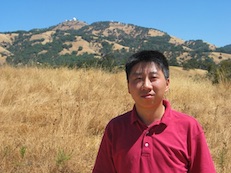
Yu Lu was a postdoc with Risa Wechsler and me. He is a cosmologist (PhD 2010) and a expert in so called semi-analytical methods of galaxy formation and statistical techniques in testing models against data. He also has authored a number of papers making sense of dark matter halo profiles and is deeply involved in ongoing galaxy surveys. He now is a postdoc at Carnegie observatories.

Raul Angulo was a KIPAC fellow postdoc here. He was the architect of the Millenium XXL simulation, the largest Dark Matter simulation carried out to date. He is a computational cosmologist studying predominantly the largest of structures in the Universe. We had a terrific time studying Warm Dark Matter mass functions, Gravitational Lensing predictions and Cosmic Velocity fields. We continue to collaborate on understanding collisionless dark matter fluids in the strongly non-linear regime. He then became a permanent researcher at Teruel before becoming an Ikerbasque Research Associate.

Silvia Bonoli was a postdoc here with Risa Wechsler and me. She is an expert on the evolution of active galactic nuclei over cosmic time and works on numerous puzzles of our understanding how these massive black holes change over time and got there in the first place. She then became a permanent researcher at Teruel before becoming an Ikerbasque Research Associate.

Oliver Hahn was a postdoc here at KIPAC from 2009 through 2012. PhD (2009, ETH Zurich) in Astronomy. While he was here we worked on a new code to create initial conditions for high resolution calculation in cosmology. We also collaborate on new visualization techniques to create images of dark matter calculated in virtual Universes and new numerical techniques to understand how dark matter has evolved over cosmic time. As part of this work we have become very fond of tetrahedra. He then moved to Zurich as a postdoc at ETH and is now a professor at the Observatory in Nice in the South of France.

Jeff Oishi was a postdoc here at KIPAC from 2010 through 2012. PhD (2007, Virginia) in Astronomy. While he was here we worked on a new code using the pseudo spectral method for general fluid dynamics simulations and on magnetic field amplification during the formation of the first stars in the Universe. He has broad interests ranging from planets, stars to cosmology. He now lives in Brooklyn and works at the American Museum of Natural History and taught in the Physics department at Farmingdale State College before moving to Bates College.
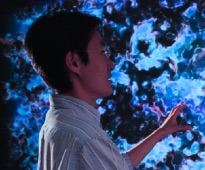
Ji-hoon Kim was a graduate student starting in 2005 and obtaining his PhD in Physics from Stanford in 2011 with a thesis entitled “GALAXY FORMATION AND MERGERS WITH STARS AND MASSIVE BLACK HOLES“. He later was a postdoctoral fellow at the University of California in Santa Cruz and one of the key people in a large project carrying out very high resolution galaxy formation simulations. He then was an NASA Einstein and Moore Fellow at Caltech before becoming faculty at SNU in Seoul.
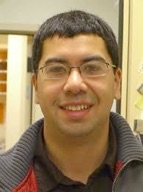
Marcelo Alvarez was a postdoc after he received his PhD in 2006 in Astronomy at the University of Texas Austin. He is an expert in particularly on the epoch reionization and the potential observables from that time when the Universe was less than a billion years old. He now then was a postdoctoral fellow at the Canadian Institute for Theoretical Physics in Toronto before joining BCCP at Berkeley.

Fen Zhao a graduate student with me received her PhD in Physics from Stanford in 2009 with a thesis entitled “MAGNETOHYDRODYNAMICS, MAGNETOGENESIS, AND MAGNETOROTATIONAL INSTABILITIES IN ASTROPHYSICS“. After a time with McKinsey consulting she became an AAAS fellow at the National Science Foundation and worked on their Big Data initiative. She now is a Venture Investor; Head of Data Science at Alpha Edison.

Peng Wang a graduate student with me received his PhD in Physics from Stanford in 2009 with a thesis entitled “NEW METHODS AND ASTROPHYSICAL APPLICATIONS OF ADAPTIVE MESH FLUID SIMULATIONS“. He was is a Manager of HPC Developer Technology at NVIDIA in Beijing, China. He is still with NVidia but back in California at NVidia’s headquarters as principal engineer in the HPC Developer Technology group.

Matt Turk was a graduate student with me and received his PhD in Physics from Stanford in 2009 with a thesis entitled “THE FORMATION OF PRIMORDIAL PROTOSTARS“. He then was a NSF Postdoctoral Fellow, working at Columbia University in the Astronomy department. He is well known as the original developer of yt a parallel framework to analyze and visualize data encountered in numerical astrophysics and related fields. He and John Wise were the two students that moved with me from Penn State University to Stanford. He then became research staff at NCSA and held a Moore Data Science Investigator award before joining the School of Information Science at UIUC as faculty.

John Wise was a graduate student with me and received his PhD in Physics from Stanford in 2007 with a thesis entitled “RESOLVING THE FORMATION OF PROTOGALAXIES“. He went NASA Goddard to work with Nobel prize winning physicist John Mather on science related to the James Webb Space telescope. Afterwards he was awarded a Hubble Space telscope fellowship which he took to Princeton where he also held a Lyman Spitzer fellowship. He joined the Center for Relativistic Astrophysics at Georgia Tech as an Assistant Professor in 2011. We worked on new numerical methods for radiation hydrodynamics and applied them to highly detailed simulations of the first galaxies. He is now a full professor at Georgia Tech.
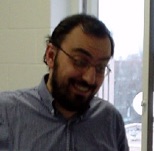
Emanuele Ripamonti was a postdoc with me 2002 through 2004 at Pennsylvania State University in State College. He is an expert in primordial gas chemistry and radiation processes and in the formation of the first stars in the Universe. He currently is a postdoc at the University of Insubria. We wrote a rather useful paper on the role of collisional induced emission in the formation of the first stars in the Universe.
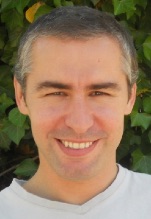
Miroslav Micic started his graduate studies with me at Penn State and finished his thesis under the supervision of Steinn Sigurdsson after I left for Stanford. He now is a Research Associate at Belgrade, Serbia. We worked on the consequences of natal kicks to black holes to their spatial distribution in galaxies and its modulating effect on predicted black hole - black hole merger rates for future Gravitational Wave detectors.
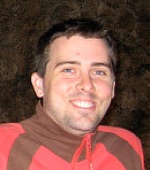
Britton Smith Started his graduate studies with me at Penn State and finished his thesis under the supervision of Steinn Sigurdsson after I left for Stanford. He now is currently a postdoc at Michigan State University. We worked on the cooling behavior of astrophysical plasmas. Much of that code is still in active use in the enzo community as it aids in realistic simulations especially for galaxy formation. Our chemsitry and cooling package Grackle supports many research codes and is a key ingredient for the Agora collaboration.

Fabio Iocco was a visiting graduate student with me 2005 through 2007. He then was a postdoctoral fellow at the Oskar Klein Centre for Cosmoparticle Physics in Stockholm. Fabio and I explored pair instability supernovae using the FLASH code and he worked quite a bit already on feedback from annihilating dark matter particles on early structure formation. He now is a professor in Sao Paolo, Brazil.

Aaron Sokasian was a graduate student at Harvard when I was a postdoc there and we collaborated on most of the papers that made up his thesis under supervision of Lars Hernquist. He started Financial Labs after graduating and eventually sold the company to Bank of America. He is now the CEO of Crypto-Systems.